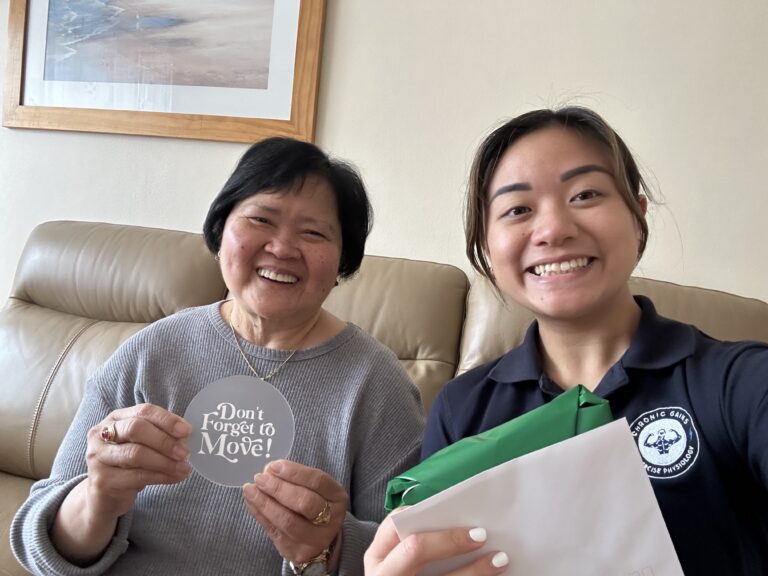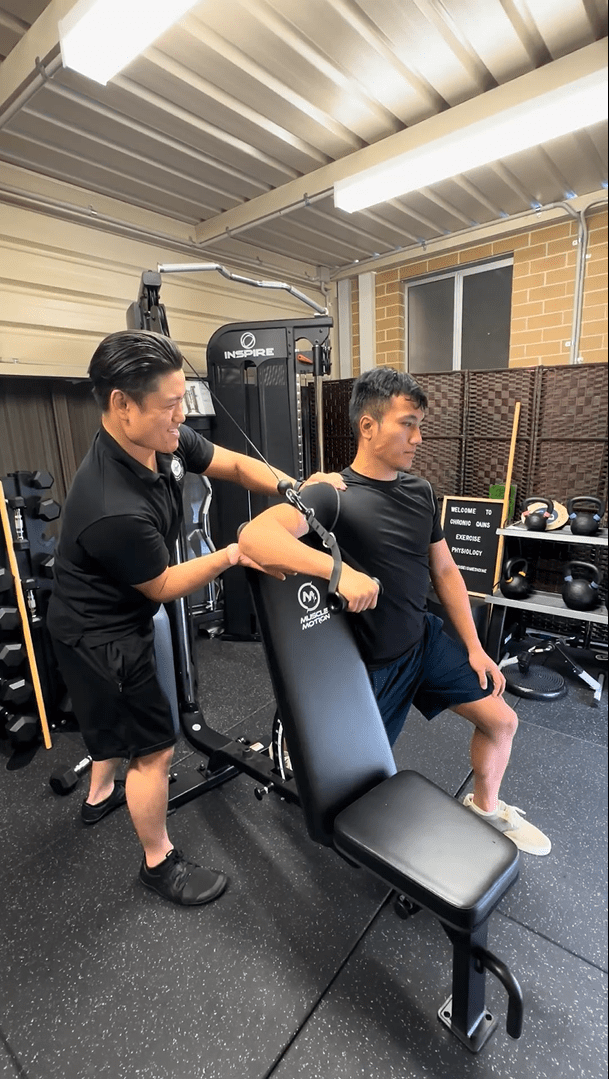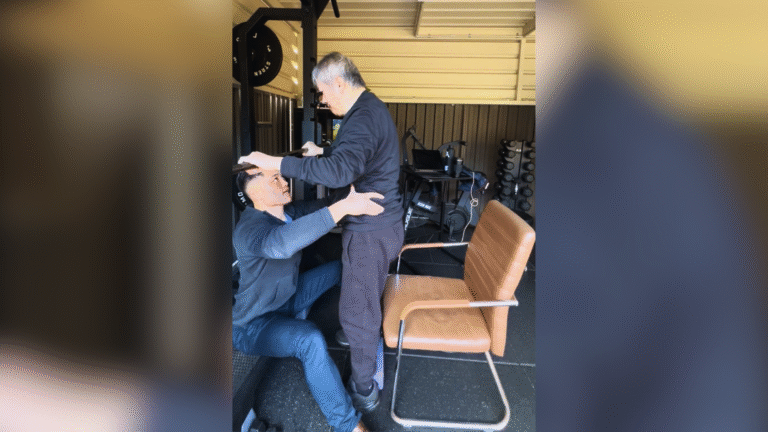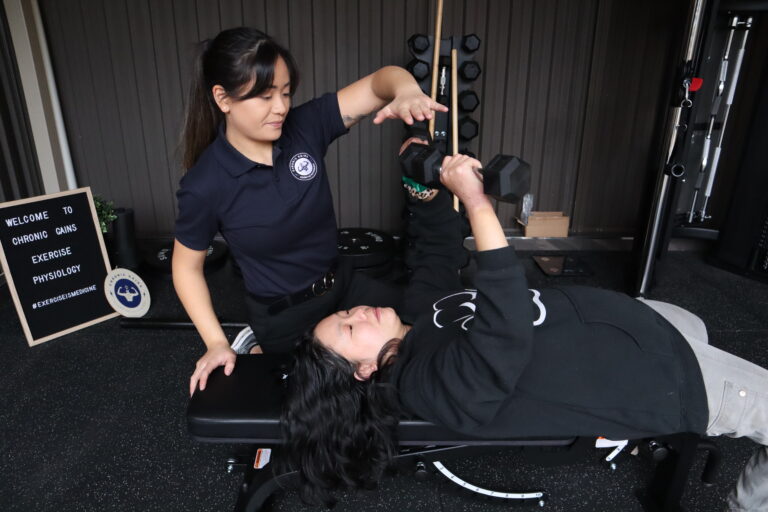Exercise Progressions, Regressions, and Personalised Programming
Introduction
When most people think about exercise, they imagine a straight line: start at one point, keep pushing harder, and eventually you’ll get stronger or fitter. But real life — and especially life with a disability or chronic condition — isn’t that simple. Some days you feel capable of more. Other days, fatigue, pain, or changes in health mean you need to scale things back.
At Chronic Gains, we work with NDIS participants across Bankstown and the wider Sydney region, and we know firsthand that progress in exercise isn’t linear. It’s a journey with steps forward, pauses, and sometimes steps back. That’s why the art of progression, regression, and personalisation is so important.
A well-designed exercise program doesn’t just move in one direction. It adapts — meeting you where you are today, while still nudging you toward where you want to be tomorrow. In this blog, we’ll explore how exercise physiologists use progressions and regressions to keep programs safe, effective, and motivating, and why personalisation is the key to lasting success.
Section 1: What Exercise Progression Really Means (Beyond “Harder Workouts”)

When people hear the word progression, they often picture lifting heavier weights, running longer distances, or doing more repetitions. While those are all forms of progression, they only scratch the surface. For NDIS participants — and anyone living with a chronic condition or disability — progression has to be much more thoughtful.
In exercise physiology, progression means making gradual, structured changes to a movement so that your body adapts safely. It’s about nudging you forward without skipping steps, avoiding frustration or injury along the way.
Here’s what progression might look like in practice:
- Complexity over load: Instead of adding more weight to a squat, a participant might progress by moving from a high chair to a lower chair — demanding more control without extra equipment.
- Environment change: Someone practicing balance might start between parallel bars, then progress to free-standing, and eventually to dynamic activities like stepping over obstacles.
- Combining tasks: A participant might begin by practicing transfers in a quiet, controlled setting, then progress to transfers in busier or less predictable environments that mimic daily life.
- Endurance over speed: For someone with fatigue, progression could mean sustaining a task for longer before needing rest, rather than doing it faster or harder.
💡 The key idea: Progression isn’t about pushing harder for the sake of it. It’s about moving smarter — adapting the challenge so it’s achievable today and sustainable tomorrow.
At Chronic Gains, we treat progression like a staircase. Each step should feel challenging, but never overwhelming. Skip too many steps at once and you risk slipping. Take them steadily, and you build strength and confidence with every climb.
Section 2: Why Regressions Are Just as Important as Progressions

If progressions are about moving forward, regressions are about knowing when to take a step back — and that’s not a bad thing.
Too often, exercise is framed as “go harder or go home.” But in reality, every body has fluctuating needs. Pain flare-ups, fatigue, medication changes, illness, or even just a rough night’s sleep can make yesterday’s exercise feel impossible today. That’s where regressions come in.
A regression isn’t failure — it’s a smart adjustment that keeps you moving safely. Rather than forcing an exercise that’s too difficult, we scale it down so you can still succeed, avoid injury, and stay consistent.
Here are a few examples of how regressions might work in practice:
- Changing range of motion: If a participant can’t manage a deep lunge without knee pain, we regress it to a smaller step or supported split stance.
- Adding supports: A balance drill on one leg might regress to using a chair or parallel bars for stability.
- Reducing load: A weighted exercise might regress to bodyweight only, or even resistance bands if needed.
- Breaking down tasks: Instead of practicing a full transfer, a participant might work on just one component — like arm positioning or core stability — before building back up.
⚠️ The risk of ignoring regressions: Without them, participants either push too hard and risk injury, or they stop altogether because the task feels impossible.
At Chronic Gains, we see regressions as stepping stones, not setbacks. They keep momentum alive when life throws challenges your way. More importantly, they protect confidence. When participants know there’s always a way to adapt an exercise, they stop fearing failure — and start trusting the process.
Section 3: Personalised Programming — The Art of Balancing Progressions and Regressions

Progressions and regressions don’t exist in isolation. The real skill lies in knowing when to use them, how to combine them, and how to link them back to the individual’s goals. That’s where personalised programming comes in.
For NDIS participants, a “standard program” doesn’t cut it. Two people may have the same diagnosis, but their needs, abilities, and daily environments could be worlds apart. One person with multiple sclerosis might want to garden again, while another is working toward longer community walks. Both may benefit from balance and endurance training — but the way we structure their sessions will look completely different.
Personalised programming means:
- Understanding context: Where and how does the participant want to use their strength or skills? A step-up in clinic means little unless it translates to climbing stairs at home.
- Flexibility in delivery: A program should flex with the participant’s day-to-day health. If fatigue is high, we regress. If energy is better than expected, we progress.
- Aligning with goals: Every progression or regression must tie back to something meaningful. If the goal is transferring independently, every adjustment should move the participant toward that outcome.
- Layering challenges: Sometimes the best program isn’t about harder or easier, but combining different elements — like adding cognitive tasks to balance drills to mimic real-world demands.
Nerida’s Story

Nerida, an NDIS participant, describes her journey with Chronic Gains as “the best thing that’s ever happened to me.” Living with chronic pain in her back, shoulder, and sciatica, even the smallest daily tasks — like getting out of bed or making a coffee — once felt heavy, slow, and exhausting.
Through a personalised program that adapted daily based on her pain and energy, Nerida gradually built confidence and capacity. On harder days, exercises were regressed to reduce strain; on better days, they were progressed to push her limits safely. Over time, she noticed the difference:
- She could get out of bed in the morning with far less pain.
- Cooking, which once felt impossible because of the standing involved, became enjoyable again.
- She even began looking forward to starting a veggie garden — something she never thought she’d manage before.
As Nerida puts it, “I’m not in so much pain now, I can move more freely, and I can actually do things.” What began as a program to ease her pain has given her energy, confidence, and even joy in everyday activities she once avoided.
This is what personalised programming is about: meeting people where they are, adapting with them, and opening doors to the life they want to live.
Section 4: How Progressions and Regressions Build Long-Term Success
Progress in exercise is rarely a straight line. There will be strong weeks, slow weeks, and sometimes setbacks. What matters most is not perfection, but consistency and adaptability — and that’s exactly where progressions and regressions shine.
By building both into a program, participants don’t just get stronger physically. They also gain confidence, resilience, and trust in their own abilities.
Think about it like this:
- Progressions ensure that no one gets “stuck” doing the same basic movements forever. Small, safe increases in challenge mean the body keeps adapting, skills improve, and independence grows.
- Regressions provide the safety net. They mean that when pain flares up, when fatigue hits, or when health changes, exercise doesn’t have to stop. Instead, it adjusts — keeping the participant engaged and moving, even on harder days.
This adaptability creates what we call long-term adherence — the ability to keep exercising not for weeks, but for years. And that’s where the real health benefits live. Improved strength, balance, mood, energy, and independence don’t come from short bursts of effort. They come from programs that bend, flex, and grow with you.
For NDIS participants, this can be life-changing. A plan that adapts with your condition — rather than breaking when challenges arise — is a plan you can trust. It allows people to keep showing up, keep trying, and keep building momentum, even when progress feels slow.
At Chronic Gains, we’ve seen how this approach transforms lives. It’s not about chasing perfection. It’s about building a system where every day has an entry point — whether you’re feeling strong and ready to progress, or struggling and needing a step back.
That’s how participants don’t just achieve short-term wins, but build the foundations for lifelong independence.
Conclusion: A Smarter Path to Progress
Exercise isn’t about doing more for the sake of it — it’s about doing what’s right for you, at the right time. For NDIS participants, that means having programs that are flexible, adaptive, and deeply personal.
Progressions provide the challenge needed to grow stronger and more independent. Regressions offer the safety and reassurance that exercise can continue, even on tough days. And personalised programming ties it all together — ensuring every session connects back to what truly matters in daily life.
At Chronic Gains, we see these principles not just as exercise tools, but as a philosophy of care. They allow us to remove the guesswork, empower participants with safe and achievable steps, and celebrate real-life outcomes — like cooking a meal with less pain, gardening with confidence, or moving through the day with energy and dignity.
Because when exercise is tailored, adaptable, and grounded in best practice, it stops being a chore. It becomes movement as medicine, support that makes sense, and a pathway to reclaiming strength and independence. Contact us now and start your journey to health with our Accredited Exercise Physiologists.







